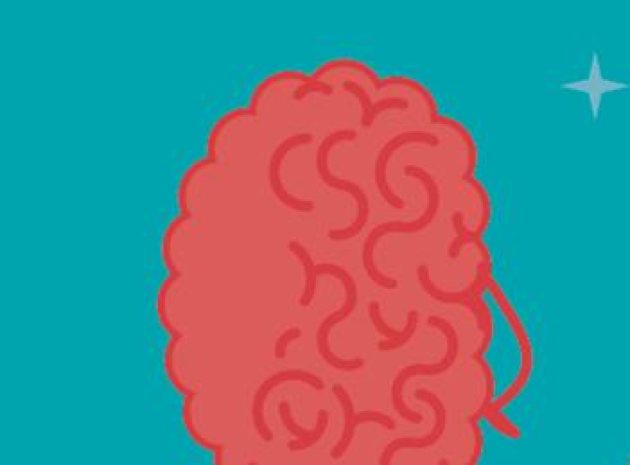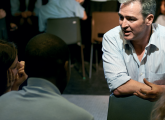As our understanding of neurobiology continues to expand, research has revealed that there are regions in the brain dedicated to social cognition, or interpreting social interactions. Psychiatric pioneer Dr. Leslie Brothers first called this network of regions, which appears to be strongest during adolescence, ‘the social brain’. Dr. Sarah-Jayne Blakemore, a leading social neuroscientist studying adolescent development, touched on this at the recent British Psychological Society annual conference 2015, demonstrating how the social brain could actually be a Trojan horse for teachers.
The social brain plays a crucial role in our interactions with other people. One important function is granting us the ability to predict the actions of others based on their mental state. This virtually automatic process of interpreting the mental state of others is termed ‘mentalising’. So, what is the significance of the social brain in relation to adolescents? Well, researchers have noted something unique: many social cognitive functions undergo constant and continual development during adolescence. In the past twenty years, studies have found that there is continued functional and structural development during the period of adolescence and into the early twenties. The dramatic physical, hormonal, social and psychological changes experienced by adolescents, combined with the ongoing development of the social brain, may help to explain some all too common teenage behaviours such as heightened selfconsciousness, risk-taking and susceptibility to peer influence.
This unique combination of psychological and physiological factors underpins the significant challenges experienced by every sector of society which has to deal with the capriciousness of adolescents, including educators. However, analysis of the social brain presents an opportunity to enhance teaching and learning strategies, making it possible to overcome such challenges by incorporating insights on the workings of the adolescent social brain into the educational process.
The social classroom
One issue faced in education is the brain’s natural inclination towards the activation of the mentalising network or the social brain. This bias affects the working memory network, which is responsible for general intelligence and analytical reasoning. Therefore, rather than treating socialising and classroom education as disparate concepts, educators could endeavour to transform educational content and processes into a more social form so as to better engage adolescents and improve learning.
The brain has the ability to focus on certain facts during a typical classroom lesson using the working memory network. However, it also has an inherent tendency to explore the social environment using its social network. This is especially true during adolescence and may explain why many students prefer social engagement with classmates during the delivery of lessons. This results in a constant battle between learning and distractions, such as talking during class. Instead of punishing students, then, which is not particularly effective, could teachers strive to harness the adolescent brain’s natural social leanings to improve the teaching and learning process?
Consider two subjects in particular: history and English. Often, high school history lessons largely focus on recorded facts including names of world leaders and dates of pivotal incidents. This fact-based content is typically stripped of the social content, context and implications in which the social brain is naturally interested. This almost certainly leads to students becoming distracted and teachers struggling with control issues in the classroom. And it’s an unnecessary consequence, since history has always been rich with social contexts and backgrounds – the very reason why we consider these events and individuals an important part of history in the first place. We tend to forget this, however, when we impart this information to our students.
Dramatic outcomes
It is true that there are many uncertainties about historical accounts and their social aspects, which may prevent the presentation of an accurate social narrative. However, the presentation of what we know supplemented by what might have happened could aid students in remembering the acknowledged facts. This could take the form of allowing students to act out the narrative, or to participate with a group of peers to form a play based on what has been learnt.
Picture the scene: the teacher yells action; Guy Fawkes embarks on his unsuccessful attempt; teacher yells cut; students discuss why he’s doomed to tragedy. Or even why this is a tragic . In truth, simply starting a discussion about what might have occurred will go a long way towards engaging the social brain of students and to improving learning outcomes.
The English curriculum is another area in which social cognition, if incorporated to a greater extent, could aid the adolescent learner. Increasingly, English language content is focused largely on the facts governing syntax, semantics, spelling and grammar. However, not much emphasis is placed on its underlying principle, which is diametrically linked to social cognition and the social brain. The principle is communication and it allows us to transfer ideas, to understand people and persuade them. Utilising the ability of the social brain to analyse the perspectives of others would allow students to pre-determine the effect that their written work will have on their audience.
Natural opportunities
Far from being an obstacle that educators must constantly surmount, then, the increased social activity in the adolescent brain could be – as Blakemore suggests – the Trojan horse by which necessary information can be infiltrated into what is sometimes erroneously perceived as unsinterested brains.
Adolescence is the period during which there is the greatest opportunity to learn concepts that will remain with an individual for his or her entire lifetime.“It is of paramount importance that adolescents are in school during those years when their brains are particularly adaptable and malleable,” concludes Blakemore. “It is a fantastic opportunity for learning and creativity. So what’s sometimes seen as the problem with adolescents – heightened risk-taking, poor impulse control, self-consciousness – shouldn’t be stigmatised. It actually reflects changes in the brain that provide an excellent opportunity for education and social development.”
5 Ways to Work with the Social Brain
- Utilise the strong ‘social’ aspect of the adolescent brain by devising group interaction activities to facilitate learning – think ‘pair’ and ‘share.
- Image and social acceptance matter, so don’t put students into learning situations that might lead to embarrassment, such as calling on them to answer a question when you know they haven’t been listening. Talk to the student in private.
- Make lessons relevant to adolescents’ lives – teenagers are motivated by their own goals and interests. Could they do a rap song or create a modern play about a particular era in history?
- Adolescents forget easily due to preoccupation, so provide easy to process learning information that encourages greater engagement – pictures and interesting stories are particularly popular with adolescents.
- Adolescents are battling for independence, so provide opportunities for autonomy, such as allowing students to provide feedback on how lessons should be conducted.<
ABOUT THE AUTHOR
Nicola Davies is a psychologist and freelance writer with a passion for education. You can follow her on Twitter (@healthpsychuk) or sign up to her free blog: http://healthpsychologyconsultancy.wordpress.com/










